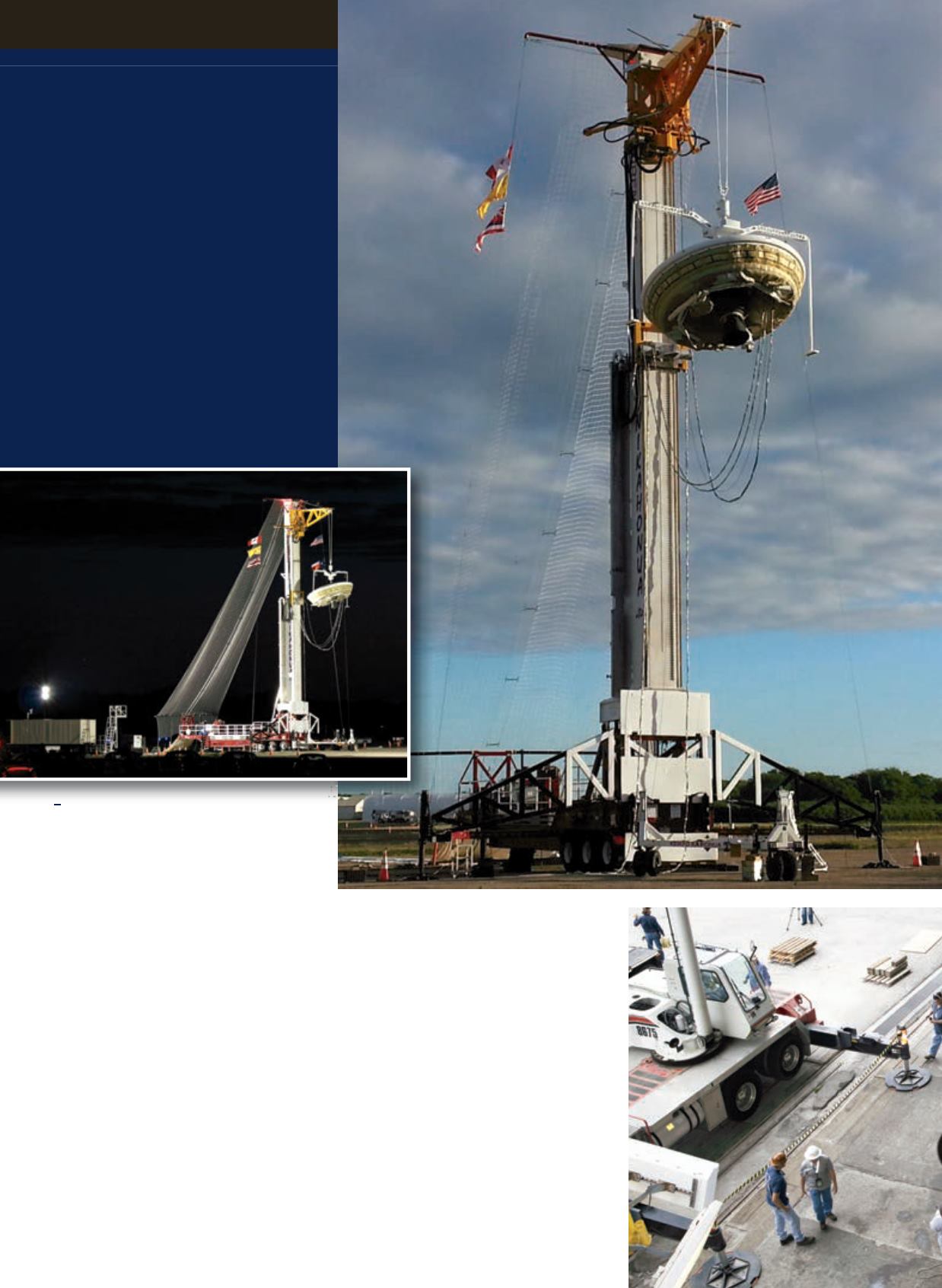
20
ACT
JANUARY 2015
RIGGINGREVIEW
As the saucer-shaped LDSDwas
prepared to be launched by NASA,
DICA Safety Tech Outrigger Pads
were used under the front and rear
pontoons of the crane-like device to
provide load distribution.
issued inOctober 2014, itemNo. 1on
the agency’s site inspection checklist is
todetermine the adequacyof ground
conditions beneath the equipment set-
up area such as the support/foundation,
matting, cribbing, blocking, etc.
“This sets the context for just how
important an issue this is for crane
operations,” saidKoberg.
In early2014 at theKennedySpace
Center inFlorida,DICASafetyTech®
OutriggerPadswereused in a traditional
crane lifting application.DICADR422
HeavyDutySafetyTech® outrigger pads,
measuring42 inches indiameter by2
inches thick andweighing93pounds
wereusedunder a75-tonLink-Belt
HTC8675LB truck crane.
I
n themodernSpaceAge,where
scientificdiscovery remains aprimary
goal forNASA, a varietyof aerospace,
technologydevelopment and aeronautics
projects arepaving theway for future
NASAmissions.
WhetherNASA is employingnew
technology to launchvehicles intonear
spaceor simply liftingheavy components
with cranes on the ground, providing a
safe setup is essential to the job. Recently,
SafetyTech® outrigger pads fromDICA
played a small, but essential role, in two
NASAprojects.
“Whether you are conductinghigh-tech
liftingoperations for the government or
making everyday lifts, knowingwhat’s
under theoutriggers and settingup the
crane to correctly accommodate for the
ground conditions is fundamental to safe
liftingoperations,” saidKrisKoberg, CEO,
DICA.
InOSHA’sComplianceDirective for
Cranes andDerricks inConstruction,
Ground
control
DICA helps provide safe
setup on the ground for
futureNASAmissions
in space,
ACT
reports
exclusively.
PHOTO CREDIT: ERICH KLEIN, PROJECT LEADER COLUMBIA SCIENTIFIC BALLOON FACILITY
PHOTO CREDIT: PACIFICMISSILE RANGE FACILITY


